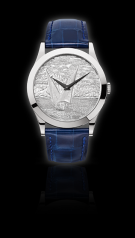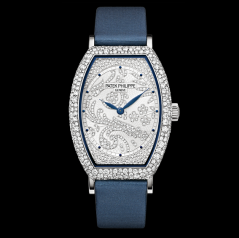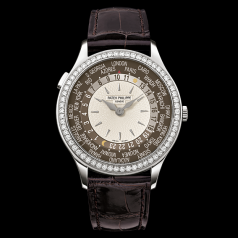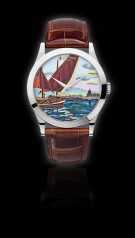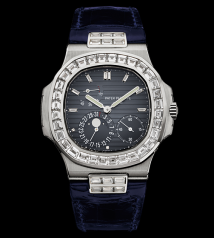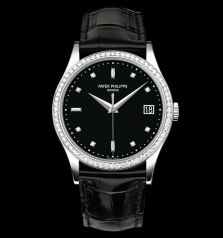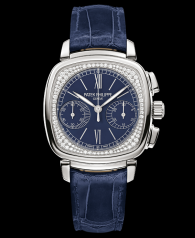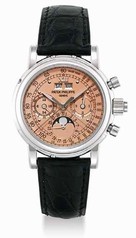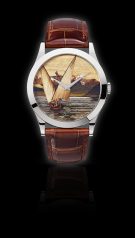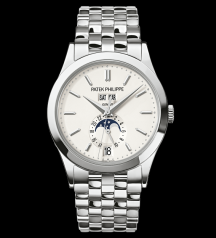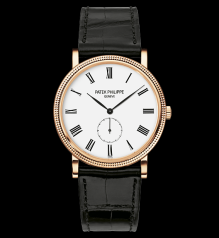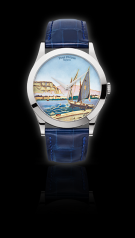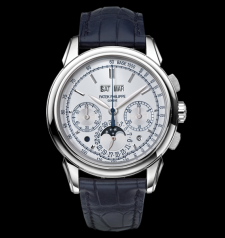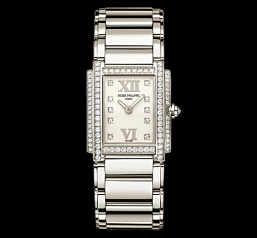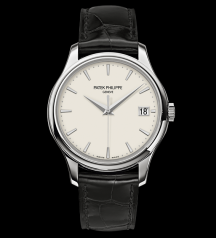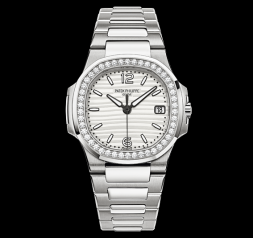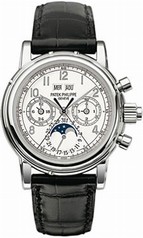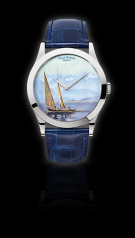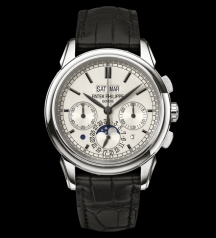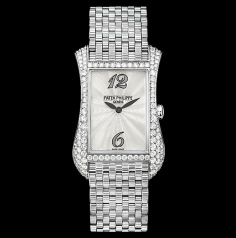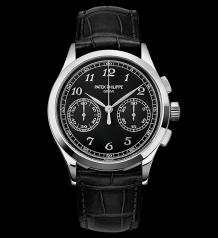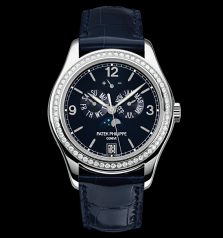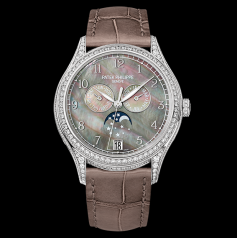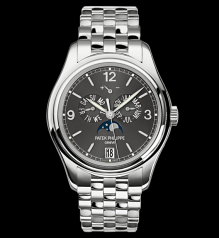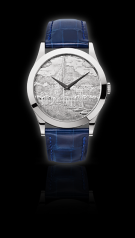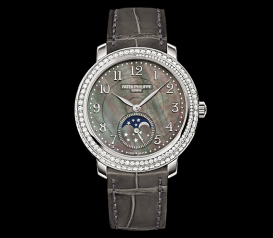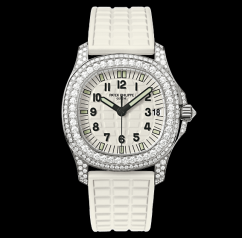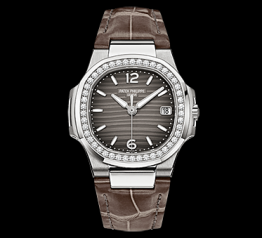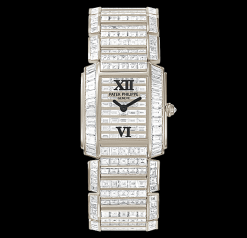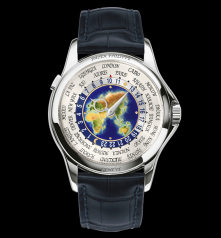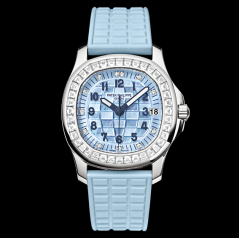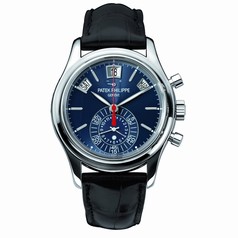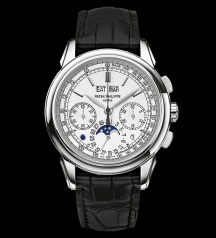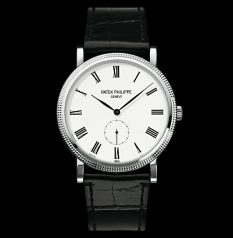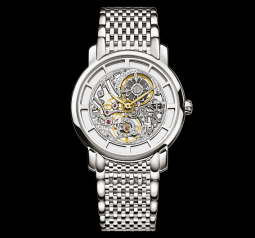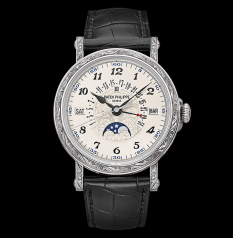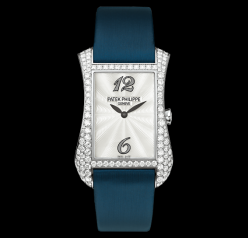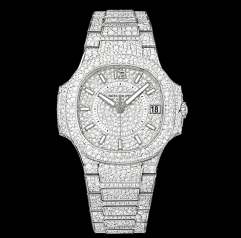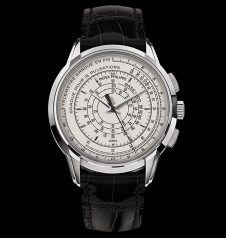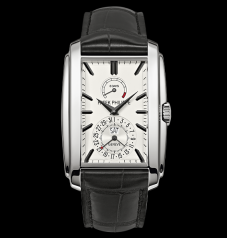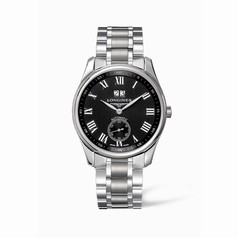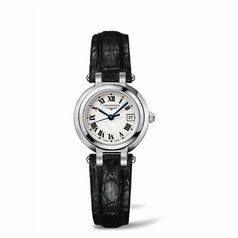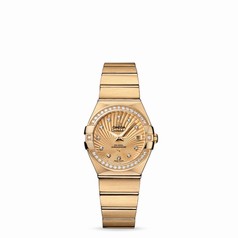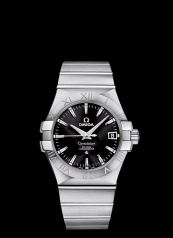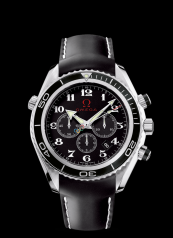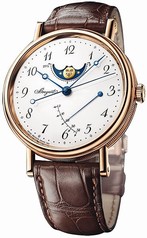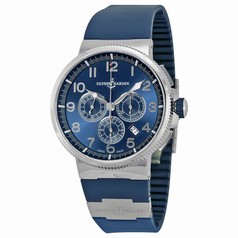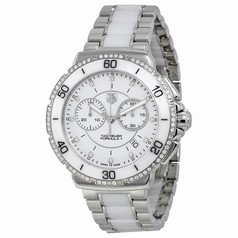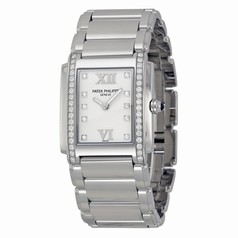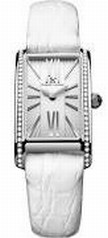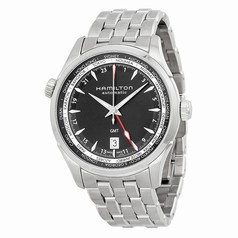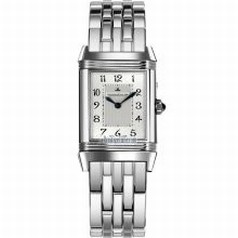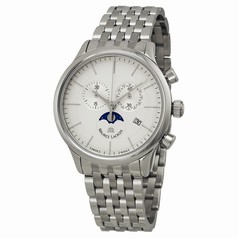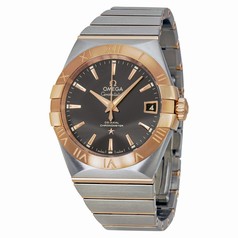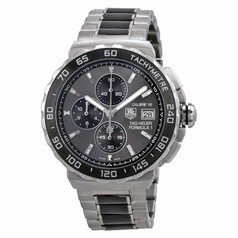-
Patek Philippe - Annual Calendar Chronograph Ref. 5960/1A
Launched in 2006, the Patek Philippe Annual Calendar Chronograph in platinum was the manufacture's first self-winding chronograph. It manifested a new and unique style with its prominent monocounter and three large calendar apertures, and quickly established itself as one of the most coveted timepieces of the Patek Philippe portfolio. Now, the letter "A" in the model designation 5960/1A, which stands for acier (steel in French), announces a paradigm change. The Annual Calendar Chronograph in stainless steel is not only the latest sibling of its lineage but will also replace all current gold and platinum versions.
Patek Philippe's stainless steel watches have always ranked among the most desirable timepieces because they were crafted only in small numbers. They were not regularly produced until 1976, when the manufacture introduced the casually elegant Nautilus line. Its memorable slogan: "One of the world's most expensive watches is made of steel." Twenty years later, the Aquanaut was also endowed with a stainless steel case. With very few exceptions - such as the ultra-thin Ref. 5950A split-seconds chronograph which has been in the collection since 2010 - all other Patek Philippe men's wristwatches were systematically cased in gold or platinum. As regards this strict distinction between casual and classic watches, the new Ref. 5960/1A is another one of these seductive exceptions.
The new stainless steel case imbues the Annual Calendar Chronograph with authoritative technical finesse. It emphasizes the active and dynamic nature of the chronograph and underscores its function as a convenient timekeeping instrument of everyday utility. Nonetheless, the new Ref. 5960/1A has a decidedly elegant nimbus attributable to the balanced, gently rounded case contours and the superb finishing touches that reflect the competence of Patek Philippe's casemaking ateliers. The artisans are required to accrue several years of experience before being entrusted with the finissage of the manufacture's cases. Because of its hardness, stainless steel challenges the skills of the case specialists and imposes special requirements on their tools.
The elegance of the case is highlighted by the signature bracelet with its five rows of "drop" links. It is eminently supple and of filigreed elegance. Developed by Patek Philippe, this bracelet was first introduced in 1997 for the Ref. 5036/1 Annual Calendar and now celebrates its debut in stainless steel.
Technical elegance also characterizes the new silvery-gray dial with its striking red accents, interesting bright-dark contrasts, and the dynamic, performance-oriented looks of its explicitly three-dimensional architecture. A red "1" in the date aperture kicks off each month with a colorful stimulus while the dates from the 2nd to the 31st days are displayed black on white. Thirteen appliques in black oxidized gold produce the expressive 3D effect: the chronograph scale on the periphery of the dial with twelve luminous five-minute markers, the three distinctively contoured frames for the aperture displays of the day, date, and month, the eight pointed-baton hour markers, each with three facets and a recessed sink at the flat end, as well as the 12-hour counter scale at 6 o'clock.
Additionally, the dial features two printed concentric chronograph minute counter scales (0 to 30 and 30 to 60 minutes) within the applied hour counter scale, a small day/night indication at 6 o'clock, and the minus and plus symbols for the power-reserve indicator beneath the date aperture. The redesigned hands of the Ref. 5960/1A accentuate the dynamic elegance of the watch. The hour and minute hands in black oxidized gold feature three facets to match the hour markers and have a luminescent coating. The brass hour-counter hand is black nickel-plated to match the applied counter scale. The large counterbalanced chronograph hand in steel and the small minute-counter hand in brass are bright red as dynamic hints that they are used for measurements in competitive sports. The power-reserve hand in black nickel-plated gold was redesigned as well. It is now wider and skeletonized.
The hands and the calendar displays are powered by the Patek Philippe CH 28-520 IRM QA 24H caliber with flyback chronograph and Annual Calendar as well as power-reserve and day/night indications. It beats with a frequency of 28,800 semi-oscillations per hour (4 hertz), which assures a constant balance amplitude and thus high rate accuracy. A heavy central rotor in 21K gold winds the watch automatically.
The movement is a prime example of tradition paired with innovation. It combines the classic column-wheel control concept with a modern vertical disk clutch that eliminates the risk of hand jump or recoil when the stopwatch function is activated. The clutch is practically friction-free, so that the chronograph hand can be used as a permanently running seconds hand if desired.
The patented Spiromax® balance spring made of Silinvar® is another innovative feature. Its isochronous oscillation, low mass, antimagnetic properties, and unique geometry assure high rate stability and uniformity. These are ideal prerequisites for the fulfillment of the Patek Philippe Seal precision criteria which for mechanical movements of this size tolerate a rate deviation of no more than -3 to +2 seconds per day.
This rate accuracy also benefits the patented Patek Philippe Annual Calendar, a modular ensemble that is a scant 2.48 mm high despite its 154 parts. Displaying the first day of the month in red, the calendar automatically recognizes months with 30 and 31 days and only needs to be manually corrected by one day on March 1 of each year.
As of this year, Patek Philippe's new Annual Calendar Chronograph 5960/1A replaces all Ref. 5960 Annual Calendar Chronographs in gold and platinum.
-
Patek Philippe - «KunstWerkUhr» Exhibition
The exhibition was held at the Kunsthalle der HypoVereinsbank, a famous art gallery in Munich. 22'000 people, more than twice as many visitors as had been anticipated, attended the « KunstWerkUhr » exhibition. "The positive feedback we received from visitors was extremely rewarding", said Yannick Michot, Director of Deutsche Patek Philippe. The Patek Philippe Grand Exhibition "KunstWerkUhr" displayed 474 exhibits, for the very first time in Europe, on more than 1,200 sqm, during 11 days. The exhibition was based on three major pillars: The museum, the workshops and fine artisanship - all designed to give visitors a chance to experience the company's universe and its history from its very origin in 1839. The workshops' section featured the entire current collection, as well as all grand complication models, including the exceptional Star Caliber 2000 - the third most complicated timepiece ever crafted. The museum section was a true reproduction of the Patek Phlippe Museum in Geneva, displaying 88 exhibits, including some of the most antique portable watches dating back to the 16th century and coming from the South of Germany. The major attraction of this exhibition was the display and live demonstrations of watchmakers and artisans who came specially from the Geneva workshops: gemsetters, engravers, enamel painters and engine-turning experts showcased their ancient skills in front of enthusiastic visitors. The Patek Philippe "Watch Art Grand Exhibition" already met with great success in January 2012 in Dubai. The exhibition will travel to London in 2015. "We came to Munich because this city prizes the values on which the Patek Philippe success story is based: tradition and innovation, appreciation of sublime artisanship, love of art and culture," said Thierry Stern, the company's president and fourth-generation member of the owning family.
-
Patek Philippe Museum - Timepieces signed Rousseau
On the occasion of the three-hundredth anniversary celebrations of the birth of Jean- Jacques Rousseau organised by the City of Geneva and in the context of its "2012 Rousseau pour Tous" (Rousseau for All) programme, the Patek Philippe Museum and the Comite Europeen Jean-Jacques Rousseau (CEJJR) present an exceptional exhibition. "Timepieces Signed Rousseau" is taking up residence at the Patek Philippe Museum from 11 May to 13 October 2012.
The exhibition showcases horological masterpieces from the 17th century: some thirty precious and rare timepieces from the collections of the Patek Philippe Museum, prominent museums and private collections. Constituting a vibrant tribute to the Rousseau watchmaking dynasty, they bear witness to the extraordinary manufacturing expertise of the Geneva Fabrique, an institution that from the 17th century onwards made the City of Calvin the cradle of fine watchmaking. Accompanied by a selection of archive documents, the watches on display invite visitors to discover a fascinating century where time won its spurs through the hand of man.
Under the name of the "Fabrique" were organised all of Geneva's jewellery and watchmaking industries, in the form of independent workshops based on the apprenticeship system and grouped together in the Saint-Gervais neighbourhood. Transmitting their know-how from generation to generation, the master watchmakers and jewellers, along with the goldsmiths, enamellers, miniaturists, engravers, chasers and other artisans of the corporation, were zealous in pursuing and developing their metiers. Jean Rousseau, Jean-Jacques Rousseau's great-grandfather, belonged to this aristocracy of craftsmen. His seven sons followed in his footsteps, some as watchmakers, others as goldsmiths, engravers or lapidaries. Thus did the Rousseau dynasty occupy the horologically related trades.
WATCH THE PHOTO GALLERY
From his youngest age, Jean-Jacques used to observe his grandfather David in his watchmaker's atelier. It was there that he would realise the value of the craftsman's work. From this immersion into the precision of the act and of the mind, he developed a structural approach to thought as attested in this excerpt from Emile: "I am like a man who sees an opened watch for the first time and, although he did not know the use of the machine and had not seen the dial, should not cease to admire the result. I do not know, he would say, what all this is for, but I see that each piece is made for the others, I admire the craftsman in the detail of his work, and I am very sure that all these gears go thus in concert for a common end which I cannot perceive." (Book IV, OC p. 578)
Among the works shown here, more than twenty were signed by a member of the Rousseau family. Through the variety of shapes, decorations and mechanisms is revealed the astonishing freedom of creation of the 17th and 18th centuries. From memento mori to cross-shaped watches, coach watches to complicated timepieces, all are imbued with exceptional aesthetic and technical creativity. Here a miniature enamel painting embellishes a cover; over there, a finely chased decoration graces a case. Every detail crystallises the mastery deployed by the makers of time from past centuries. In the course of the exhibition, viewers can take a swath of history to heart through the saga of the Rousseau dynasty and immerse themselves in the Age of Enlightenment: the century that, beyond the realm of pure philosophy, consecrated the artisan as the emblem of reasoning with one's hands.
Rousseau the philosopher, Rousseau the writer, Rousseau the politician, Rousseau the interdisciplinary sage… This man of greatness marked Western history and society for eternity. His convictions on liberty and intuitive conscience and on freedom of expression and thought, in addition to his analytical and contemplative sensibilities, have undeniably contributed to the aura of the city of Geneva. The exhibition catalogue presents a collection of scientific and historical articles that provide a fresh perspective on the effervescent period of the 18th century.
Highlighting the value of the Rousseau legacy, the authors portray a Geneva undergoing rapid expansion. A look at the Rousseau family tree reveals that Isaac Rousseau, the father of Jean-Jacques, worked as "watchmaker to the Sultan" on the banks of the Bosphorus. He studied the context of Calvin's sumptuary laws of 1558 and the organisation of the famous Fabrique, and followed the aesthetic evolution of watches from their beginnings until the 18th century.
A window opened onto a creative past, "Timepieces Signed Rousseau" has been set up as a place of memory. The exhibition's inauguration is taking place on the 10th May 2012, in the presence of Philippe Stern, honorary president of Patek Philippe; Remy Hildebrand, president of the Comite Europeen Jean-Jacques Rousseau (CEJJR); and Sami Kanaan, president of the Cultural Affairs Department of the City of Geneva.
The Comite Europeen Jean-Jacques Rousseau, founded in 1995 in Geneva comprises a group of Rousseauistic authorities. Under the presidency of Remy Hildebrand, the organisation unveils the highlights of Rousseau's life in Switzerland and in Europe. The CEJJR was the driving force behind the creation in 2002 of the Espace Jean-Jacques Rousseau in the house of his birth at 40, Grand-Rue in Geneva.
Since its opening in 2001, the Patek Philippe Museum has had on display one of the most prestigious horological collections in the world. Some 2,000 watches, automatons, precious objects and miniature portraits on enamel provide an overview of more than five centuries of the Genevan, Swiss and European watchmaking heritage.

